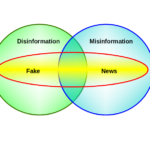The weather forecast indicated that heavy rain will commence overnight, lasting close to 36 hours and, in the process, dumping from 1 to 3 inches (2.5 to 7.5 centimeters) on the ground. Yes, a lot of rain was expected. But I had to find a break in the rain to be able to go out and complete my planned running session.
The night before the local weather person told the audience a two-hour rain break in the early morning was in the works. With this in mind, the first thing I did when I woke up the next morning was to check the cool radar option on the mobile app that shows the future path of the incoming rain. Indeed, the radar showed that between 7:45am and 9:15, more or less, the storm will be missing in action in my location.
I started my session at around 7:55am. It was drizzling. Fifteen minutes later the rain intensified. I kept looking up at the clouds sort of asking them where is this falling water coming from. It is not supposed to be there, come on! I also considered the possibility of the unexpected rain to be a momentary glitch. So I continue to run. Five minutes later it just got worse, not better. I wear glasses on a regular basis but had not brought my head cap. Visibility thus started to decrease fast. As the snow was also melting, the fog was getting worse too. Once I was totally soaked, I decided to cut short my session. I quickly headed back home to take a hot shower to avoid any potential health-related complications, just in case.
In hindsight, I realized I had forgotten entirely about the Butterfly Effect which I studied when I was in graduate school. Yes, that was last century. But the years have yet to make a dent in the relevance of the Butterfly Effect. On the contrary, arguing that climate change is, in fact, showing its importance is not farsighted.
In a nutshell, the butterfly effect says that, in a given system, a small change in the initial conditions can trigger a massive change in the state of such system. Prediction under these circumstances is thus much more complicated as changes in initial conditions can lead to entirely different states. The term was coined by Edward Lorenz,1 Not related to the creator of the Lorenz curve used to develop the Gini coefficient for inequality. a US meteorologist who developed the Lorenz Attractor, shown in the graph below. Now we can see where the idea of the butterfly came from. The Butterfly effect is part of non-linear dynamic systems that characterized chaos theory and (those wonderful) fractals. No need to dig deep into these topics here. Suffice to say that we are used to having a linear perception of nature where cause and effect are somehow proportional. Well, nature is much more complex than that.
Now we can see where the idea of the butterfly came from. The Butterfly effect is part of non-linear dynamic systems that characterized chaos theory and (those wonderful) fractals. No need to dig deep into these topics here. Suffice to say that we are used to having a linear perception of nature where cause and effect are somehow proportional. Well, nature is much more complex than that.
I can now thank the Butterfly Effect for getting soaked during my carefully planned jogging session. Moreover, the predicted rain did not actually take place on the scale it was initially anticipated. Now we know why. So there is no need to call the weather person to complain loudly or reach out to policymakers demanding a reduction in the budget of the national weather service – or its total elimination.
Weather forecasts are probabilistic. So next time you check it also look at the probability the events being announced have. Only rarely this is 100%.
There is a 2004 film with the same name which I have not seen. But from what I have read, the film is about time travel – and not on non-linear dynamics and chaos. Too bad…
Cheers, Raúl
Endnotes
| ⇧1 | Not related to the creator of the Lorenz curve used to develop the Gini coefficient for inequality. |
|---|






